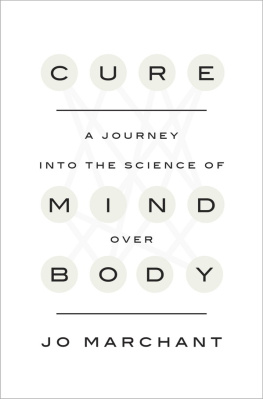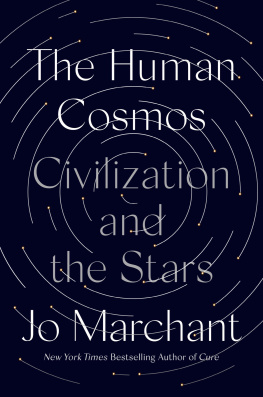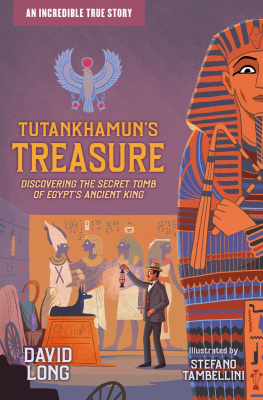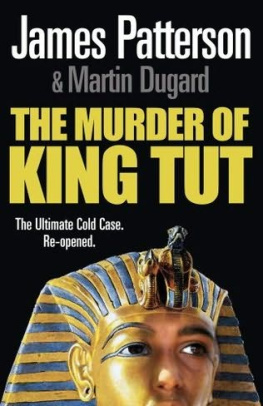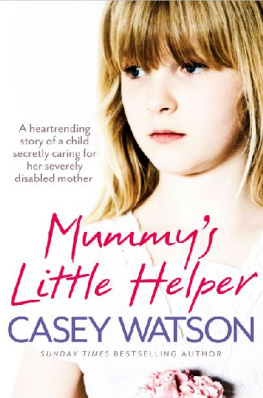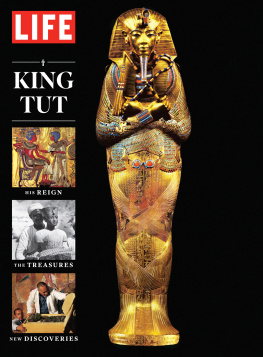THE
SHADOW
KING
THE
SHADOW
KING
THE BIZARRE AFTERLIFE
OF KING TUTS MUMMY

JO MARCHANT

DA CAPO PRESS
A Member of the Perseus Books Group
Copyright 2013 by Jo Marchant
All rights reserved. No part of this publication may be reproduced, stored in a retrieval system, or transmitted, in any form or by any means, electronic, mechanical, photocopying, recording, or otherwise, without the prior written permission of the publisher. For information, address Da Capo Press, 44 Farnsworth Street, 3rd Floor, Boston, MA 02210.
Designed by Pauline Brown
Library of Congress Cataloging-in-Publication Data
Marchant, Jo.
The shadow king : the bizarre afterlife of king Tuts mummy / Jo Marchant.
p. cm.
Includes bibliographical references and index.
ISBN 978-0-306-82134-9 (e-book) 1. Tutankhamen, King of Egypt. 2. Tutankhamen, King of EgyptDeath and burial. 3. MummiesConservation and restorationEgypt. 4. EgyptHistoryEighteenth dynasty, ca. 15701320 B.C. 5. Forensic sciences. I. Title.
DT87.5.M34 2013
932.014092dc23
2012041912
Published by Da Capo Press
A Member of the Perseus Books Group
www.dacapopress.com
Da Capo Press books are available at special discounts for bulk purchases in the U.S. by corporations, institutions, and other organizations. For more information, please contact the Special Markets Department at the Perseus Books Group, 2300 Chestnut Street, Suite 200, Philadelphia, PA 19103, or call (800) 810-4145, ext. 5000, or e-mail .
10 9 8 7 6 5 4 3 2 1
To Dora and David Wood
CONTENTS
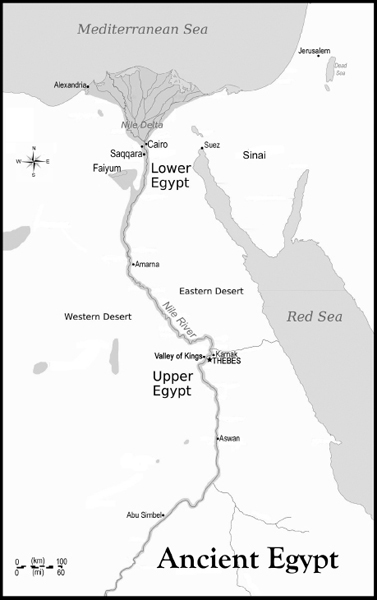

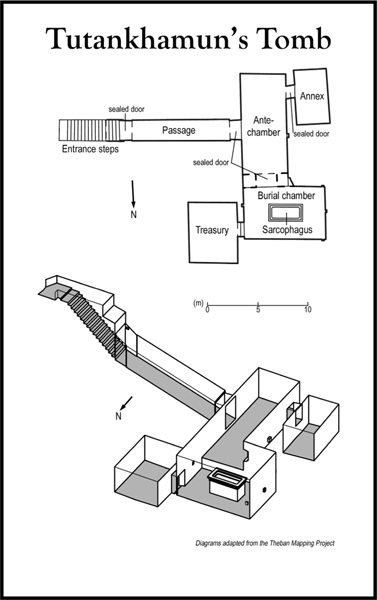
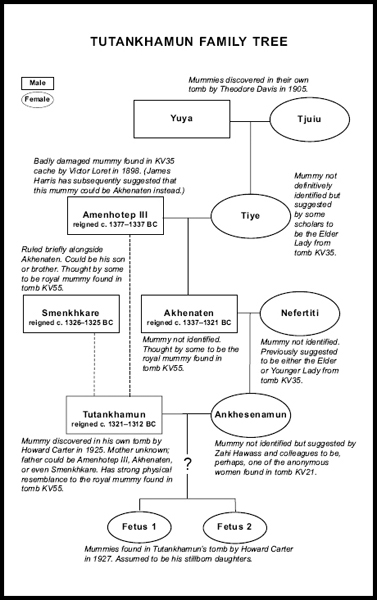

S OMETIMES THE MOST MUNDANE-SEEMING TASK can set you on a journey that you didnt expect. In the summer of 2010, flicking through the latest issue of the Journal of the American Medical Association ( JAMA), I found something that did just that. Squeezed between papers on routine medical topics from diabetes to Down syndrome were five short letters about the mummy of the Egyptian pharaoh Tutankhamun. They were barely noticed by the rest of the world. But they started me on an adventure that led from forgotten archives in rainy London to the heat of the Egyptian desert, and ultimately to this book.
Like so many others, Ive always been fascinated by ancient Egypt: the wonders of an advanced civilization, the romance of the pyramids, the pharaohs fierce determination to live forever, and of course those perfectly preserved mummies that bring us face to face with the distant past. Tutankhamuna young king found intact in his tomb surrounded by the greatest ever haul of ancient treasureis the most powerful draw of all.
Scientific studies of the kings mummy have kept him in the news, providing a string of intimate insights into his life and the cause of his untimely death. Ninety years after the discovery of his tomb, King Tut is more famous than ever. The star of countless books, feature films, and documentaries, his golden mask is instantly recognizable and his tomb is visited by millions.
In February 2010, JAMA published the most dramatic study yet. As part of the King Tutankhamun Family Project, led by Egypts top antiquities official, Zahi Hawass, researchers carried out sophisticated scans and DNA tests of Tutankhamun and other royal mummies from his timethe rich and powerful Eighteenth Dynasty, which ruled more than three thousand years ago.
It was a groundbreaking study, full of new information about the pharaohs. Among other things, the scientists quashed decades of speculation about the identity of Tutankhamuns father. They also reversed the view of Tutankhamun as an active king, as suggested by chariots, weapons, and sporting equipment found in his tomb, and recast him as an inbred genetic weakling. His parents were apparently brother and sister, and he had a range of inherited deformities, including cleft palate and clubfoot.
The same day the paper was published, the Discovery Channel broadcast the story of the research in a glossy documentary called King Tut Unwrapped. The findings, which Hawass described as the last word on Tutankhamunmade news headlines around the world. At last we knew the truth about a life lived 3,300 years before.
Then I saw the letters. Written in the calm, cutting language that is scientists code for utter disdain, they took the JAMA study apart. Experts from different fields and from prestigious institutions around the world criticized nearly every aspect of the research, from Tutankhamuns family relationships to the analysis of the bones in his feet. In particular, geneticists at one of the worlds foremost ancient DNA labs in Copenhagen complained that from everything we know about Egyptian mummies, it is highly unlikely that any ancient DNA survives inside them. The latest results, they feared, were caused by contamination of the mummy samples with modern DNA.
The letters got little or no press coverage. But I was intrigued. Was the study by Hawasss international team really so full of holes? Could the entire family tree be based on a mistake? And if these scientists were right, what do we really know about Tutankhamun?
To find out, I called the authors of the JAMA study and of the letters, as well as a range of other experts. I found that when it comes to Tutankhamuns mummy, very little is as it seems. One letter plunged me straight into a bizarre and bitter argument that has long split the field of ancient DNA. Another revealed an ongoing debate over whether Tutankhamun had female breasts. A third introduced me to the mystery of an anonymous mummy found dripping with gold, which over the years has been identified as everyone from Tiye, one of Egypts most powerful queens, to the biblical prophet Moses.
In every case, the science was clouded in argument and uncertainty. But none of this was making it through into the bestselling books and documentaries about King Tut. I looked back at previous studies and found that this disparity between reporting and reality is nothing new. It seems that Egyptology, as sold to the public, is sometimes not so far from show business.
Over the years, we have been presented with a range of different stories about this frail mummy. Theres Tut the murder victim. The inbred cripple. The sickly youth who succumbed to malaria. The active king who died at war, or in a chariot accident. The hunter who was mauled by a hippo. Not to mention the black-magic artist who laid a deadly trap for those who would invade his tomb more than three thousand years later.
Worryingly often, science studies are reconstructed and packaged for the cameraswith researchers routinely acting out their roles after the eventwhile contested or ambiguous results are shaped into dramatic new discoveries. But whats really going on behind the scenes? To find out, I decided to set out on an archaeological investigation of my own.
Next page

